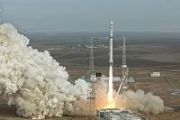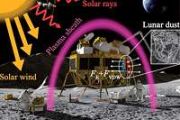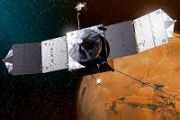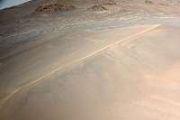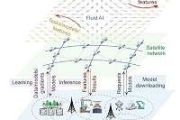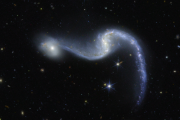
Copernical Team
China to boost satellite services, space technology application: white paper
 China will continue to boost public services with satellites and promote the application and transfer of space technology in the next five years, according to a white paper on the country's space program.
The white paper, titled "China's Space Program: A 2021 Perspective," was issued Friday by the State Council Information Office.
China will intensify the integration of satellite app
China will continue to boost public services with satellites and promote the application and transfer of space technology in the next five years, according to a white paper on the country's space program.
The white paper, titled "China's Space Program: A 2021 Perspective," was issued Friday by the State Council Information Office.
China will intensify the integration of satellite app China Focus: China to explore space science more: white paper
 China will carry out more space science exploration in the next five years, said a white paper on the country's space activities released Friday.
The white paper, titled "China's Space Program: A 2021 Perspective," was released by the State Council Information Office.
It says that China will continue with the research and development of programs such as the satellite for space gravit
China will carry out more space science exploration in the next five years, said a white paper on the country's space activities released Friday.
The white paper, titled "China's Space Program: A 2021 Perspective," was released by the State Council Information Office.
It says that China will continue with the research and development of programs such as the satellite for space gravit China to improve space debris monitoring: white paper
 China will improve space debris monitoring in the next five years to ensure the safe, stable and orderly operation of the space system, according to a white paper on the country's space activities released Friday.
The white paper titled "China's Space Program: A 2021 Perspective" was released by the State Council Information Office.
According to the white paper, China will strengthen
China will improve space debris monitoring in the next five years to ensure the safe, stable and orderly operation of the space system, according to a white paper on the country's space activities released Friday.
The white paper titled "China's Space Program: A 2021 Perspective" was released by the State Council Information Office.
According to the white paper, China will strengthen China's cooperation with int'l space community fruitful
 China has been engaged with the international space community over the past five years, yielding fruitful results in space science, technology and application, a Chinese official said Friday.
China launched a lunar research station project with Russia, and carried out extensive international cooperation in manned spaceflights, lunar exploration projects, Mars explorations and other mission
China has been engaged with the international space community over the past five years, yielding fruitful results in space science, technology and application, a Chinese official said Friday.
China launched a lunar research station project with Russia, and carried out extensive international cooperation in manned spaceflights, lunar exploration projects, Mars explorations and other mission Shining a light on synthetic dimensions
Extreme exoplanet has a complex and exotic atmosphere
 An international team including researchers from the University of Bern and the University of Geneva as well as the National Centre of Competence in Research (NCCR) PlanetS analyzed the atmosphere of one of the most extreme known planets in great detail. The results from this hot, Jupiter-like planet that was first characterized with the help of the CHEOPS space
An international team including researchers from the University of Bern and the University of Geneva as well as the National Centre of Competence in Research (NCCR) PlanetS analyzed the atmosphere of one of the most extreme known planets in great detail. The results from this hot, Jupiter-like planet that was first characterized with the help of the CHEOPS space Extremely harsh volcanic lake shows how life might have existed on Mars
 A few specialist microbes survive conditions analogous to those of Mars' early history, reports a new publication in Frontiers in Astronomy and Space Science-and this may be thanks to a broad range of adaptations.
The hydrothermal crater lake of the Poas volcano in Costa Rica is one of the most hostile habitats on the planet. The water is ultra-acidic, full of toxic metals and the temperat
A few specialist microbes survive conditions analogous to those of Mars' early history, reports a new publication in Frontiers in Astronomy and Space Science-and this may be thanks to a broad range of adaptations.
The hydrothermal crater lake of the Poas volcano in Costa Rica is one of the most hostile habitats on the planet. The water is ultra-acidic, full of toxic metals and the temperat China, Russia to start building lunar research station by 2026
 China said Friday that it expects to sign a space agreement with Russia by the end of this year that will include construction of a joint lunar research facility.
"We are intensively engaged in negotiations and have basically reached a consensus. The agreement is quite possible to be signed as soon as possible this year," China National Space Administration Vice Administrator Wu Yanhua
China said Friday that it expects to sign a space agreement with Russia by the end of this year that will include construction of a joint lunar research facility.
"We are intensively engaged in negotiations and have basically reached a consensus. The agreement is quite possible to be signed as soon as possible this year," China National Space Administration Vice Administrator Wu Yanhua Skyroot Aerospace to fly its rocket from mobile launch pad in 2022
 Rocket maker Skyroot Aerospace Private Ltd's Vikram-1 rocket is slated to lift off from a mobile launch pad or transporter, erector and launcher (TEL), a top company official said.
The Hyderabad-based company is planning to test launch its rocket with a couple of satellites by the end of this year, he added.
"Our maiden rocket launch will be with a couple of satellites from a mobile launc
Rocket maker Skyroot Aerospace Private Ltd's Vikram-1 rocket is slated to lift off from a mobile launch pad or transporter, erector and launcher (TEL), a top company official said.
The Hyderabad-based company is planning to test launch its rocket with a couple of satellites by the end of this year, he added.
"Our maiden rocket launch will be with a couple of satellites from a mobile launc Astra Awarded VADR Contract by NASA
 Astra Space, Inc. has been awarded of the Venture-Class Acquisition of Dedicated and Rideshare (VADR) Launch Services Indefinite Delivery/Indefinite Quantity (IDIQ) contract from the National Aeronautics and Space Administration (NASA) for future task orders, which have not yet been issued.
This contract has a five-year ordering period with a maximum total value of $300 million and will be
Astra Space, Inc. has been awarded of the Venture-Class Acquisition of Dedicated and Rideshare (VADR) Launch Services Indefinite Delivery/Indefinite Quantity (IDIQ) contract from the National Aeronautics and Space Administration (NASA) for future task orders, which have not yet been issued.
This contract has a five-year ordering period with a maximum total value of $300 million and will be 



